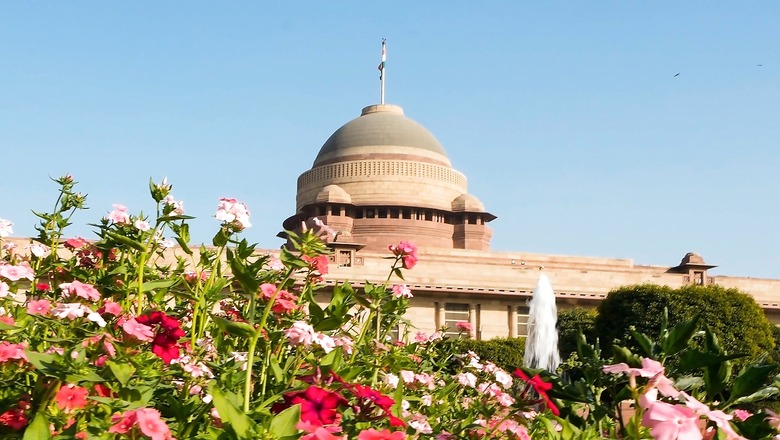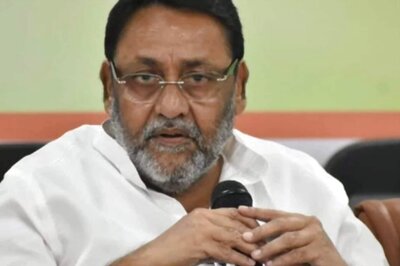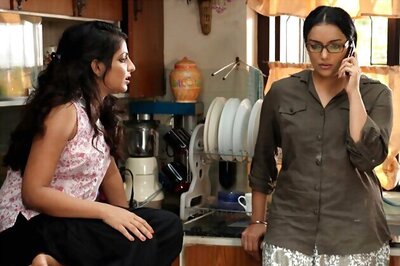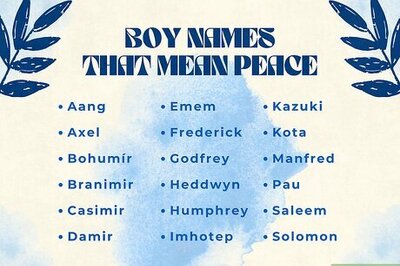
views
The revered Mughal Gardens spread across 15 acres of the Rashtrapati Bhavan has been renamed ‘Amrit Udyan’. The garden boats a rich history since its creation at the President’s House – originally built as Viceroy’s House. After renaming of the Mughal Gardens, the Rashtrapati Bhavan secretariat also updated its website with some facts about the garden.
Here is a brief history of the celebrated gardens:
Origin and Concept of Mughal Gardens
The Mughals left their mark across lands that they ruled. Gardens were particularly appreciated by the Mughals. Mughal garden designs were heavily influenced by the medieval Islamic gardens. They were reportedly seen as a place of rest and reflection. The Mughals also considered gardens to be a reminder of paradise.
Most Mughal gardens are known to be rectilinear, with four sections crisscrossed by pathways and water. They were known as the Charbagh concept.
Mughal Garden at the President’s House
The history of the horticultural paradise, sprawling the premises of Rashtrapati Bhavan, dates back to the 1920s. In 1911, King George held a grand Durbar in Delhi where he made the official announcement that the imperial capital will be shifted from Calcutta to Delhi.
Lutyens and Sir Herbert Baker gave shape to the new imperial capital, with the Viceroy’s House and the North Block and South Block as the centrepiece of ‘New Delhi’- the officially name given in 1926.
In early 1917, Sir Edwin Lutyens finalised the design of the gardens in the Viceroy’s House. However, it was only during the year 1928-1929 that plantings were reportedly done. According to the Rashtrapati Bhavan website, the key collaborator for the gardens was Director of Horticulture, William Mustoe.
Style of the Mughal Garden
Like the architecture style of the President’s House – Indian and western, Lutyens is said to have brought together two different horticulture traditions for the gardens – the Mughal style and the English flower garden.
Mughal canals, terraces and flowering shrubs were blended beautifully with European flowerbeds, lawns and private hedges.
It is also said that Lady Hardinge, the wife of the then Viceroy had a key role to play. She was reportedly inspired by the book – Gardens of the Great Mughals (1913) by Constance Villiers-Stuart as well as her visits to Mughal gardens in Lahore and Srinagar and urged planners to create a Mughal-style garden.
Key Features of the Garden
The garden at the Rashtrapati Bhavan boasts of over 150 varieties of roses, and tulips, Asiatic lilies, Asiatic lilies, daffodils hyacinth and other ornamental flowers. There are more than 70 varieties of seasonal flowers, including exotic bulbous and winter flowering plants.
While roses are a key feature, the garden also grows 60 of the 101 known types of bougainvilleas. Edging and flowering of flower beds is done with alyssum, daisy, pansy, among others. The grass that covers the garden is the doob grass, which was originally brought from Calcutta (now Kolkata) when the Mughal Gardens was being planted.
According to the Rashtrapati Bhavan website, “The Gardens has almost 50 varieties of trees, shrubs and vines, including Moulsiri tree, Golden Rain tree, flower bearing Torch Tree and many more. At present, over 300 permanent and casual employees are deployed for the development and maintenance of the gardens.”
The Iconic Rose Garden
Rose remains the key attraction of the famed gardens even today. The gardens are home to 159 celebrated varieties of roses which blossom primarily in the month of February and March.
The varieties of roses in the gardens include Adora, Mrinalini, Taj Mahal, Eiffel Tower, Modern Art, Scentimental, Oklahoma (also called black rose), Belami, Black Lady, Paradise, Blue Moon and Lady X.
The Gardens also include roses named after people of national and international importance. Some of them include – Mother Teresa, Raja Ram Mohan Roy, Abraham Lincoln, John F Kennedy, Jawahar Lal Nehru, Queen Elizabeth, Christian Dior, amongst others. Arjun and Bhim, from the Mahabharata, also find place in the presidential palace, according to the website.
‘Paradise Garden’
The Rashtrapati Bhavan’s website says, “In Christopher Hussey’s ‘The Life of Sir Edwin Lutyens’, Sir Lutyens’ wife has written that the garden was a paradise.” She added, “…flowers are set in such masses, producing a riot of colour and scents, that, when, with the fountains playing continually, there is not the least sense of stiffness. The round garden beyond beats everything for sheer beauty and is beyond words”, the websites quotes her.
Grand Opening of Amrit Udyan
Amrit Udyan: President Droupadi Murmu inaugurated the renamed Gardens of Rashtrapati Bhavan on Sunday. This time the Gardens (Herbal Garden, Bonsai Garden, Central Lawn, Long Garden and Circular Garden) will be open for about two months. The Gardens will open for general public from January 31, 2023 and will remain open till March 26, 2023 (except on Mondays which are maintenance days and on March 8 on account of Holi).
(With PTI Inputs)
Read all the Latest India News here


















Comments
0 comment